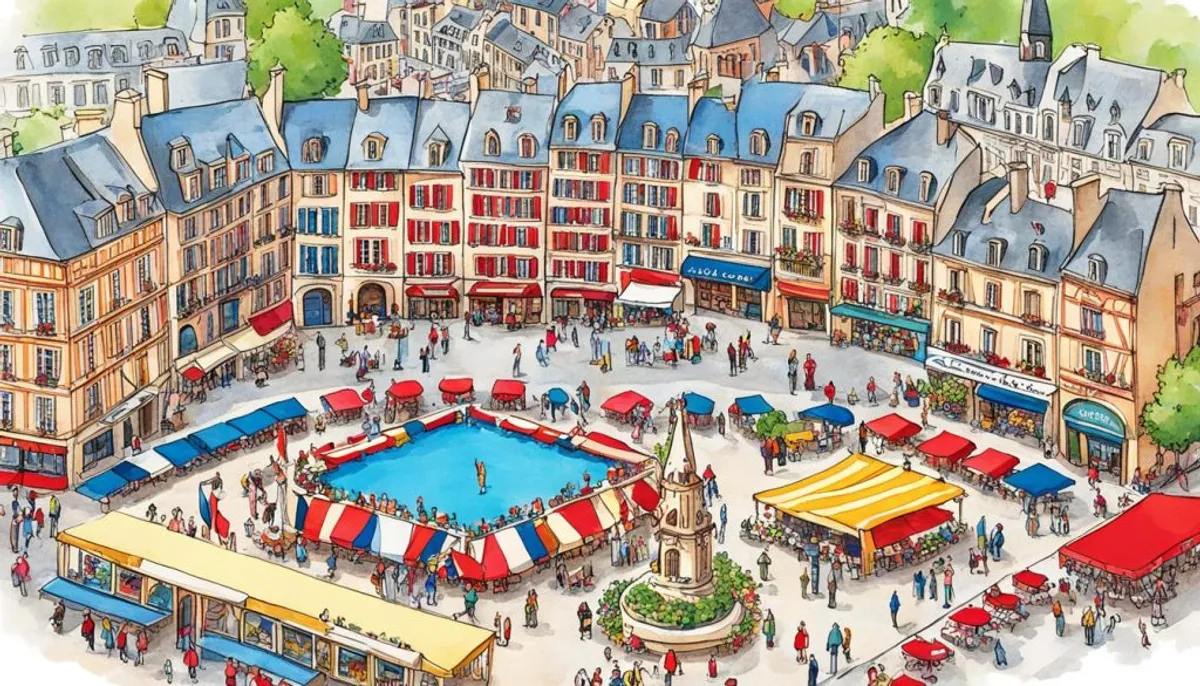The cultural spaces are crucial for our cultural heritage. They help promote the arts and culture. This strengthens our local cultural identity and makes culture accessible to everyone.

These cultural facilities are places for meeting and exchange. They enrich our cultural life and our cultural activities. They can be cultural centers, historic monuments, or other heritage sites. They are essential to our cultural projects and our cultural policy.
Definition of a cultural space
A cultural space is a physical place dedicated to the arts and culture. It can be a cultural center, a museum, a performance hall, or a historic monument. These places encourage artistic creation, cultural exchange, and sharing. They also help keep the cultural and historical heritage alive.
Place of creation and artistic exchange
Cultural spaces are essential for the creation and dissemination of the arts. They offer workshops and rooms for artists. These places encourage exchanges between artists, professionals, and amateurs.
Cultural and historical heritage
Cultural spaces are crucial for the preservation of cultural and historical heritage. They conserve and enhance the past. This helps transmit traditions and local identity.
| Definition | Place of artistic creation | Cultural heritage |
|---|---|---|
| A cultural space is a physical place dedicated to the practice, dissemination, and preservation of the arts and culture. | These spaces allow for artistic creation, exchange, and sharing around cultural practices. | They contribute to the preservation of the cultural and historical heritage of a territory. |
Role and importance of cultural spaces
Cultural spaces are essential for the development of local cultural identity. They help enhance and transmit local heritage. They also encourage creation and artistic innovation. These places are spaces for meeting and exchange, fostering mutual enrichment and a sense of belonging.
Access to culture for all
Cultural spaces are important for local culture. They are also open to everyone, regardless of age, origin, or social status. Everyone can discover, practice, and thrive through various artistic and cultural activities.
- Artistic practice workshops
- Cultural exhibitions and performances
- Educational programs and cultural mediation
Cultural spaces promote individual and collective flourishing. They stimulate creativity and strengthen social ties within the community.

What is a cultural space?
In France, cultural spaces are varied. They range from cultural centers to historic monuments. These places are crucial for culture, disseminating and creating events.
Examples of cultural spaces in France
Cultural centers are supported by local authorities. They offer a variety of artistic events. This enriches the local cultural life.
Historic monuments labeled “Cultural Meeting Centers” enhance heritage. They offer artistic and cultural activities. This allows for the discovery and preservation of France's heritage.
Recognized cultural centers
Recognized cultural centers are essential for local culture. They offer a varied program. This allows everyone to discover culture.
Labeled historic monuments
Monuments like the Palace of Versailles are labeled “Cultural Meeting Centers.” They enhance their heritage with cultural events. This enriches culture throughout the year.

Activities offered in cultural spaces
Cultural spaces are full of life. They offer a wide variety of activities and events. They are essential for cultural animation and the flourishing of all.
Here are some key activities of cultural spaces:
- Exhibitions that highlight artistic and cultural heritage
- Performances such as plays, concerts, or films
- Artistic practice workshops to get started in art
- Conferences and debates on cultural and societal topics
- Artist residencies to aid in creation and inspiration
These activities provide the public with the opportunity to discover and learn about the arts and culture. They encourage exchanges between artists and visitors. This helps in personal growth and open-mindedness.
Cultural spaces are crucial for the culture of a territory. They are a means to make culture accessible to all. They are a key tool for democratizing access to cultural activities.
Encouraging attendance at cultural spaces
It is crucial to encourage attendance at cultural spaces. These places enrich our lives, strengthen the bonds between us, and help create a strong cultural identity. We must support these spaces so that everyone can benefit from culture.
Initiatives such as awareness-raising and organizing events can help. By making culture accessible, we can encourage more people to take an interest in it. This contributes to the flourishing of the population.
It is essential to preserve our cultural heritage by encouraging attendance at these spaces. This requires the effort of all stakeholders. We must consider these places as pillars of our society.
RelatedRelated articles


